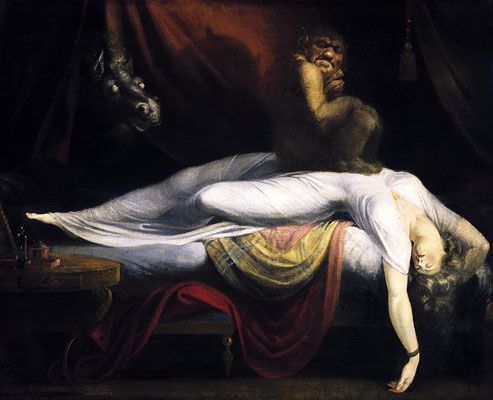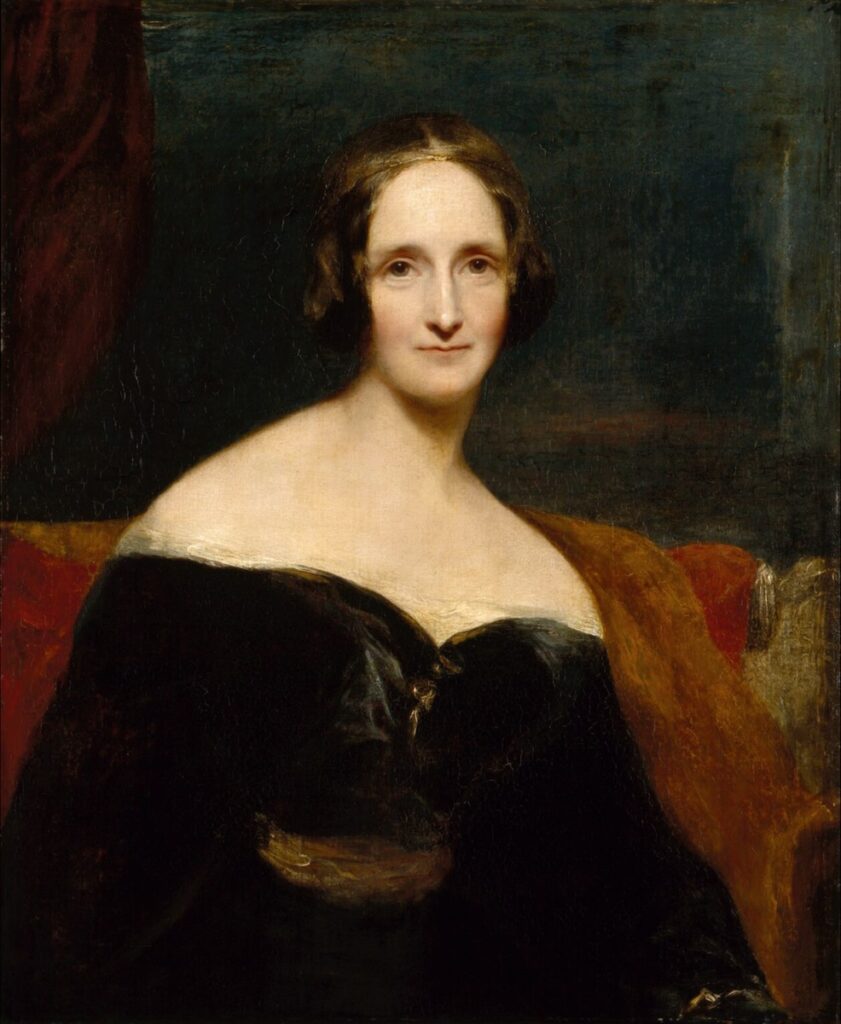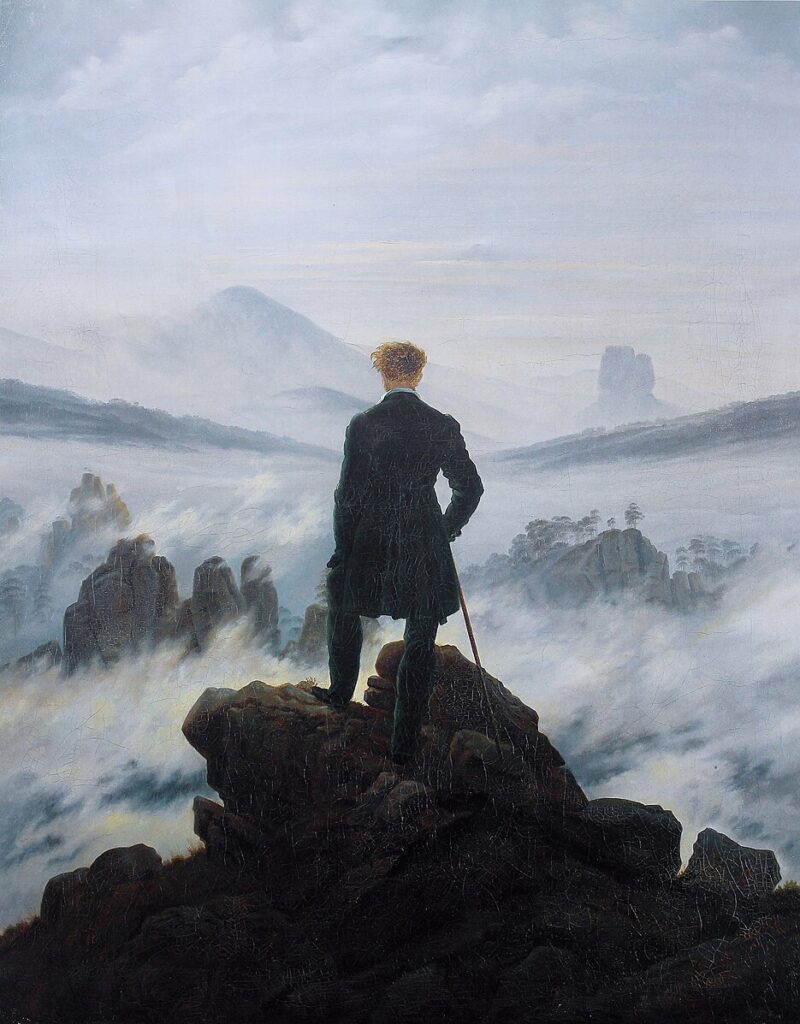If you ever wonder how literature, poetry, music, and art became so popular in the world, you need only look back to the early 19th century. This was when the Age of Romanticism blossomed.
This era put a bigger emphasis on creativity and expression. These were all vital elements that Romantics believed in.
Romanticism followed the Enlightenment’s beliefs of science and reason. But instead, it put a great emphasis on individual intuition and imagination. It was the age of beauty.
Its popularity first thrived in Germany, when Johann Wolfgang von Goethe wrote The Sorrows of Young Werther in 1774. This was a novel that contrasted with Enlightenment ideas, and instead focused on passion and emotion.
More writers used this style, and it soon spread to Great Britain, who used it in much of their literature. Soon it spread to other countries like France, Spain, Russia, and the United States, in paintings, music, and dancing.
While the Romantic period didn’t last long, it had a significant influence on history, including politics. It led to a more creative world with new ideas and contrasting styles.

A Reaction Against the Enlightenment
To understand Romanticism, one must first understand the Age of Enlightenment. This came about in the 17th and 18th centuries in Europe.
The Enlightenment focused more on science. It took more of a philosophical approach to ideas and occurrences.
Names like John Locke, Thomas Hobbes, Rene Descartes, and Francis Bacon were its most famous proponents. It focused on the pursuit of knowledge and using reason to figure out problems.
This age brought about the Industrial Revolution. This triggered inventions and a changing world.
Its biggest influence was in England, which changed its political system and government where ideas could be expressed in an open forum. This transferred over to America.
It played a big role in the American Revolution, as colonies shared their ideas and eventually formed a Congress from their new nation. It reshaped the way people comprehended issues like liberty and equality.
A significant shift in thinking, however, occurred in the late 1700s. This was as the Enlightenment began to fade into the background and the Age of Romanticism took over.
This new age focused more on the individual in what, at the time, was a chaotic and unraveling world. Rather than science and reason, individuals focused more on emotion, intellect, and beauty.
Politics and science still had big roles in society. But there was a bigger focus on literature, art, music, and culture.
The biggest area this impacted was the classroom, where students saw development in classes like Literature, Music, Art, and Drama. Additionally, activities like chess and writing through expression became more popular.
Politics was also affected, as romantics influenced people with their theories on liberalism, nationalism, conservatism, and radicalism. People focused more on their individual and unique ideas and expressing them.
Creativity took on a whole new meaning. Rather than individuals focusing on what’s in front of them and reasoning with it, they were asked to be imaginative and think outside the box.
Romanticism emphasized spontaneity and a visionary approach to things.
The Age of Music and Literature
Several authors were major influences during the Romanticism era, perhaps none more so than Mary Shelley. In 1818, at the height of the Romanticism movement, she published Frankenstein.
This book integrated many of the era’s ideas into the story. The novel focuses primarily on the individual and the essence of beauty and art and how it can be a production of science.
Like Mary Shelley’s novel, many Romantic writers and poets such as William Wordsworth, Lord Byron, Samuel Taylor Coleridge, and John Keats focused on the protagonist and their inner struggles within themselves.
Rather than the more realistic novels of the past, Romanticism novels were more creative.
They incorporated supernatural elements. This helped readers see a new world rather than what was in front of them.
People who were once identified as outcasts felt like now they belonged.

The second half of the Age of Romanticism focused more on poetry, folklore, medieval literature, dancing, and the Renaissance. Romantics in music that thrived included the likes of Ludwig van Beethoven and Franz Schubert who combined Romantic and Classical elements.
Their music illustrated more personal feelings and expression. They used more programmatic elements which was an important model for future Romantic composers.
The visual arts were led by James Barry, Henry Fuseli, John Hamilton, and Mortimer. Their paintings depicted themes that were bizarre, pathetic, or extravagantly heroic, clashing with historical figurative art.
These paintings carried more expression and feeling from the individual. People who looked at them were left to wonder what the subject was thinking.
Even in architecture, the Romantic period saw famous buildings constructed. They expressed this era’s style, such as England’s Royal Pavilion, which was the seaside home of King George IV.
It used a Romantic style called the Oriental Revival to create the building. Additionally, the English House of Parliament was designed and built along with The Houses of Justice, known today as The Tombs in New York City.
Post-Romanticism Period
In truth, Romanticism never really ended. People today still use Romantic ideas in their arts and beliefs.
Spain’s Francisco Goya thrived in the 1930s with his Romantic paintings and drawings. Romantic artists Eugene Delacroix and Joseph Turner’s teachings were used well after the period ended, particularly in Neo-Impressionism art.
Germany’s Caspar David Friedrich and his visualization of the German landscape also inspired the political ideas of radicalism and nationalism. This led to the rise of the Nazi government in that country.

The peak of Romanticism began to fade in the late 1830s. Realism took over, particularly in France where it blossomed most.
Realism was a reaction to Romanticism’s idea of “exaggerating emotions” and imagination. Instead, it focused its art on real and contemporary people in real-life situations.
Paintings expressed the current state of things. They focused more on accuracy and reality rather than fantasy.
Still, in today’s society, we see poetry from writers expressing their feelings and emotions. We watch movies and read books that emphasize the hero’s inner struggles. We go to art galleries and witness creativity and imagination. The ideas that came about in the early 1800s will forever be around.
References
“Romanticism.” Brittanica.com. Nd. https://www.britannica.com/art/Romanticism.
“Summary of Romanticism.” The Art Story. Nd. https://www.theartstory.org/movement/romanticism/.
“The Importance of Realism vs. Romanticism.” Study.com. Nd. Web.